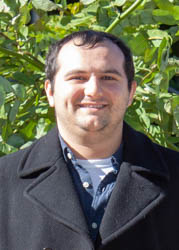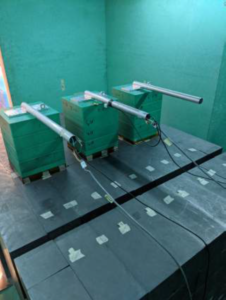The National Nuclear Security Administration (NNSA) launched the Stockpile Stewardship and Management program to address the need to ensure a safe, secure, and reliable nuclear stockpile. Since the United States voluntarily ceased nuclear explosive testing, the program’s assessment of the stockpile is now conducted through modeling and simulation. The NNSA’s Predictive Science Academic Alliance Program (PSAAP) supports simulation-based predictive science in support of stockpile stewardship in the form of major academic, applied research programs. As part of this program, The Center for Exascale Radiation Transport (CERT) was created at Texas A&M University in 2014 to develop computational techniques for simulating radiation transport systems in high-performance computing environments. CERT also performed transport experiments with quantified uncertainties for the purposes of validating the multiscale models.

Sidney Ricketts, a graduate student working with the Center for Nuclear Security Science and Policy Initiatives (NSSPI), conducted high-precision neutron measurements to provide calibration and validation benchmarks for Texas A&M’s Parallel Deterministic Transport code. Ricketts was co-advised by Dr. Marvin Adams, CERT co-principal investigator and professor of nuclear engineering, and NSSPI Deputy Director Dr. Craig Marianno.
According to Ricketts, “These experiments involved increasingly more complex graphite configurations placed in a high-density polyethylene room. This forced environment acts as a way to control and quantify the effects of room shine. My master’s thesis was an investigation into the effects of cadmium lining in the neutron detector shroud. In order to ensure the neutron measurements were accurate and to high precision, I needed to understand any unintended effects from the cadmium.”
Looking back on his NSSPI experience, Ricketts reflects, “The best experience I had as a NSSPI student was being able to travel to New Mexico as part of the Domestic Nuclear Facilities Experience. It was a rare opportunity to get a personalized tour of the national labs and seek advice from professionals in the nuclear security field.” The Domestic Nuclear Facilities Experience is an annual trip for students to nuclear facilities and national laboratories in Texas and New Mexico sponsored by the NNSA.

Ricketts defended his thesis and will be graduating with a Master of Science degree in nuclear engineering with a nuclear nonproliferation specialization in May of 2021. He plans to continue as a Ph.D. student at Texas A&M, performing neutron diagnostics on the Z Pulsed Power Facility at Sandia National Laboratory.